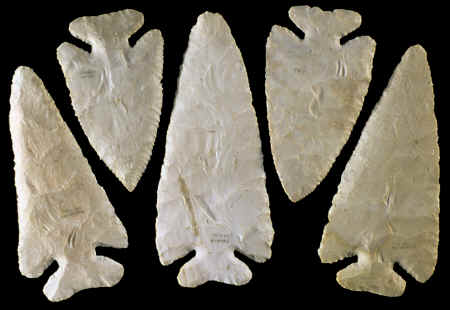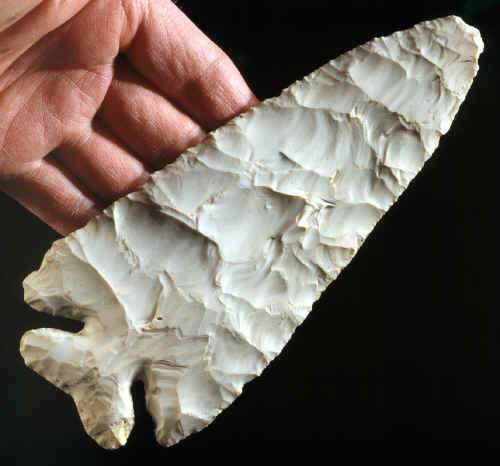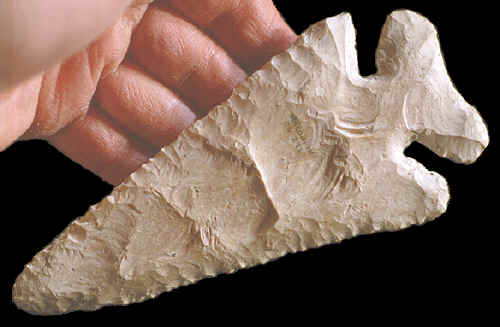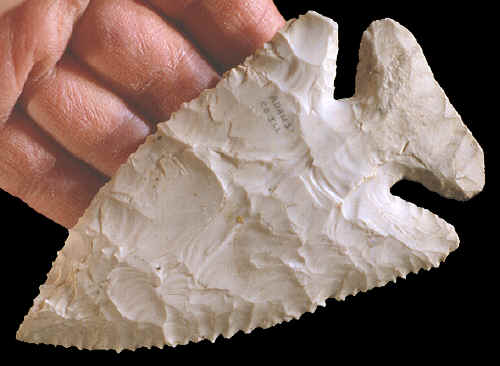|
|
|
Thebes points are found over a wide area in the central United States. They are reported from Illinois, Kentucky, Indiana, Ohio, Missouri, Iowa, Wisconsin and Michigan. |
|
|
There are many different types and styles of stone knives and spear points. Some of them were better designed than others. One example of a good design are Table Rock points that, more-often-then-not, seem to be found unbroken. Thebes points, on the other hand, were prone to breakage at their narrow necks. Greg Perino writes that "It's weakest point is in the neck of the stem. Large blades without stems are often found in the fields." |
|
|
|
|
Thebes points were made by percussion flaking. They
were flaked into broad flattened blades. Their width to thickness ratio
(W/T) ranges from 5/1 to as thin as 8/1. |
|
|
|
|
Thebes points are visually impressive stone tools. Their wide form and deep notches draw your attention. The people who made them, thousands of years ago, were using them as basic utilitarian objects and would have viewed them in a different perspective than we do today. Today, we weight and measure them and discuss how they were manufactured. But they really are fun to look at, especially the large and complete examples illustrated here. |
|
|
"REFERENCES"
1971,
Perino, Gregory, "Guide to the Identification of Certain American
Indian Projectile Points," "Special Bulletin No. 4 of the
Oklahoma Anthropological Society," pp. 96-97. |
|



